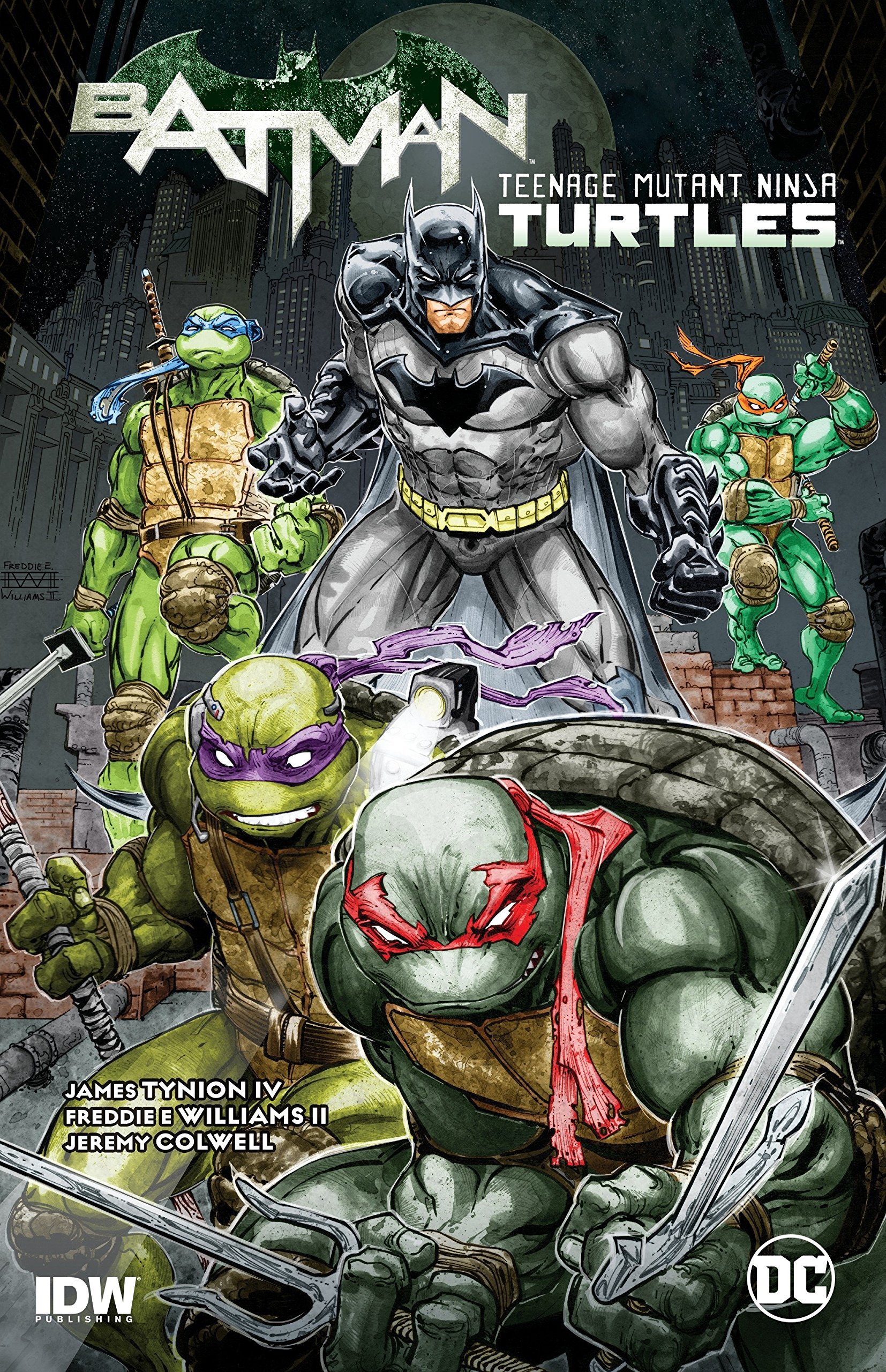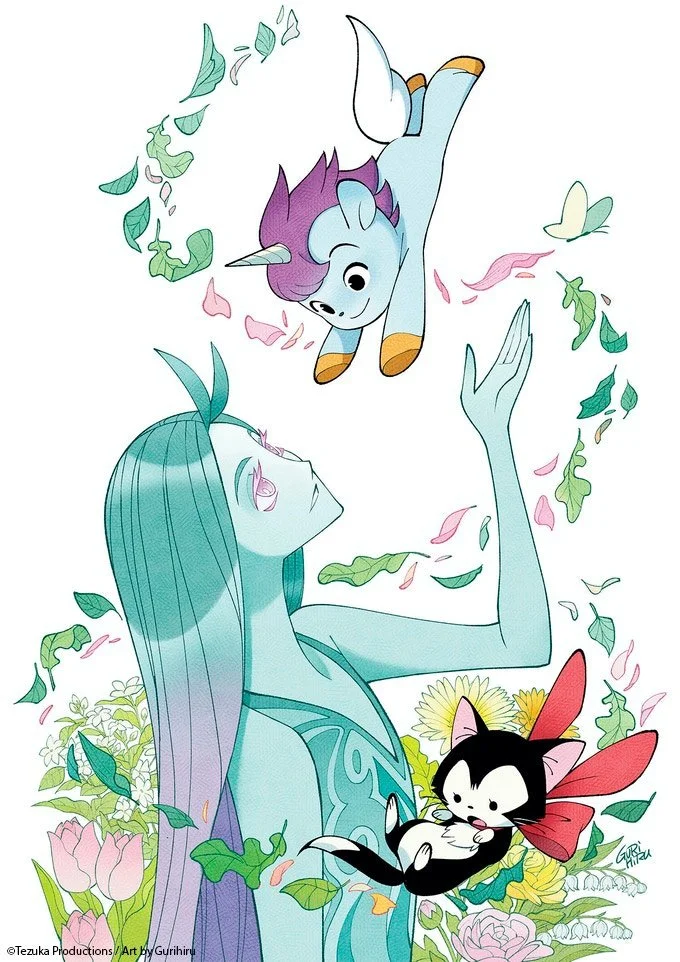Panels & Prose: Al Ewing's EL SOMBRA TRILOGY + Urasawa's PLUTO
By Sean Dillon — There a number of interesting, bizarre angles one can take with the El Sombra trilogy. It is, in many ways, Al Ewing’s most underrated work, growing out from the pulp adventure narratives of its namesake to the superhero fiction that overtook it all the way to the finite nature of a deterministic universe wherein two figures of cruelty and control battle for the nature of reality.
At the same time though, it is clearly an early work by Ewing with the first book, El Sombra, predating his 2000AD work, the second book, Gods of Manhattan, occurring around his work on Zombo, and the final volume, Pax Omega, being released alongside his tie-ins to various Brian Michael Bendis comics. In other words, this trilogy of books marks the early development of Ewing’s career right as he was on the cusp of becoming someone rather interesting to follow. As a result, certain elements in Ewing’s later work can be seen in this, albeit less refined.
But there’s one such thing in particular that jumps out at me. One that, before I read what it was riffing on, I brushed aside without consequence. I will try to keep spoilers to a minimum, save to note the basic nature of the universe. The El Sombra trilogy takes place in an alternate universe where, among other things, the Nazis have steampunk nonsense that let them invade Mexico. In the final volume, we return to one of the supporting characters who survived that occupation, Carina Contreras-Ortega, now older and somewhat wiser. Carina is in Paris as Mexico’s ambassador when she receives a mysterious message from a malfunctioning robot: “May I recommend—mend—mend—that you visit Pluto?”
The portrait, as noted within the book as being “One of several pieces by Urasawa that homages one of his idols, the artist Tezuka.” We are never given a description of the portrait, save that it depicts a dead robot. There are many dead robots within Urasawa’s Pluto. It is, after all, a manga about a serial killer targeting the world’s greatest robots. A homage to the classic Astro Boy series, Pluto approaches the material from a more tech noir angle, using the initial arc of Tezuka’s series. Over the course of the series, things become more complicated with fascist movements on the rise, political tensions between the world governments, and a rather on the nose but fitting critique of the US’ militarism during the Iraq War(s).
At its heart, however, is the life of a robot detective by the name of Gesicht. A German robot investigating the deaths of his fellow robots, Gesicht is a person who has experienced great suffering and loss, most notably his own son. And yet, through it all, Gesicht keeps a moral center to himself and a belief in the sanctity of all life. That revenge, cruelty, and evil are dead ends that only hurt those who seek to do them.
This belief courses throughout the entire narrative with the various greatest robots trying to live lives of peace from North No. 2’s attempts at caring for a blind composer to the family life of Brando to the child Atom, who must face off against the titular killer. But even Pluto himself has a desire for peace. It’s not by his choice that the violence has been perpetrated. He’d much rather paint flowers. Live in nature. He doesn’t want to kill anyone. But his master has felt an immense amount of fury over the death of his family at the war that required the creation of the greatest robots in the world.
More importantly, Pluto rebels. He fights against his programing, his master, and saves the world. Not because of some glitch in his software or a clever hacker reprograming him, but because of his own self. His love of nature, of beauty, of the sacredness of life itself, trumps the control placed onto him by his creator. But even then, our contempt lies not with the creator (long dead by the time this story) but rather the cyclical nature of war that is destroying the world. It ends on a prayer for peace and an act of mercy. (Relatively speaking.)
In Pax Omega, Pluto is a giant robot designed by the Nazis to house Hitler’s brain (but didn’t due to the bastard dying before the technology became tenable) and ultimately decides to overturn the very nature of humanity by force, making him the final traditional baddie for pulp hero Doc Thunder to defeat before ascending into something beyond post-humanity. In short, Pluto, within the framework of the El Sombra trilogy, is the exact antithesis of his characterization and nature within Pluto.
Of particular note is the conversation held between Pluto and Carina. There, they speak of the relationship between humanity and robots, if there truly is a difference between on and the other. This is a particular apt theme to discuss with regards to Pluto. But where the ball is fumbled is in the conclusion reached by the conversation. While both agree that there is little to no difference between the two, Pluto uses this to conclude that nothing good comes from hate. That it is better to create a field of flowers than to burn the world down. It’s ambivalent about the possibility of us escaping from the chain of hate, but it nevertheless hopes that day will come. By contrast, Pluto, upon hearing the uncertainty, concludes, “it seems there will always be bastards, Carina. And those who need to be saved by them” before firebombing Paris.
Not to be fair to Pax Omega, refutations can work. Indeed, the El Sombra trilogy contains numerous refutations of pulp fiction characters and those they spawned (of note is an antagonistic character who is simultaneously the Spider, Spider-Man, and the Punisher). However, they require finesse and specificity that the book’s exploration of Pluto lacks (indeed, the aforementioned Spider character feels very much like a bunch of ideas thrown haphazardly into a pot without a lot of connective tissue). In later works by Ewing, the writer will be able to take the iconography and implications of a character or narrative and turn them into strange and interesting directions. Most notably, The Immortal Hulk explores the various depth and meanings of its titular character both within the context of the larger Marvel Universe as well as the various philosophical and literary tradition such figures come from.
By contrast, the use of Pluto feels weak. As if Ewing simply took the idea of a giant robot who has a removable mind and did his own thing with it. Which is a perfectly fine thing to do. But the problem lies in the need to repeatedly and directly note the influence. In doing so, Ewing forces the contrast between his work and that of Naoki Urasawa and Takashi Nagasaki. In doing so, he highlights the failure of his own homage.
Now, is that to say the El Sombra trilogy should be tossed aside? No. The El Sombra trilogy is a delightful set of books full of fast paced action, heart wrenching character moments, and some truly amazing bits (be it the torture sequence where the torturer is monologuing about the nature of torture within fiction, the secret backstory of Doc Thunder, or all of “Jacob Steele in the Hour of Chaos”). But one need remember that this is, nevertheless, an early work. There are parts of the text where Ewing drops the ball (to the best of my knowledge the English born Ewing did not consult a sensitivity reader for the various Latinix characters), where he is still a young creator who needs to grow and change.
And yet, you can still see the clever, brilliant mind at work, and you can see why he would become one of the biggest names in comics.
Read more features writing about comics!
Sean Dillon is a writer/editor for a number of publications, including PanelXPanel, Comic Book Herald, and several others. They are also the author of the book One Must Imagine Scott Free Happy and The Tower Through The Trees. His main blog is http://thekinginredandblue.blogspot.com and their Patreon is http://patreon.com/seandillon. He can be found on most social media outlets @deathchrist2000.












